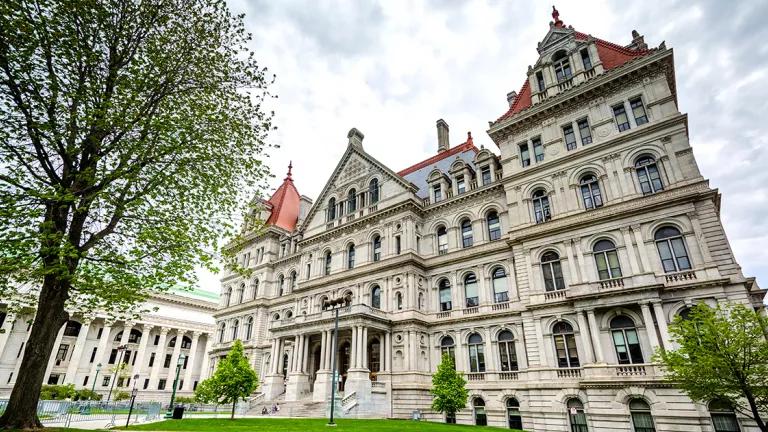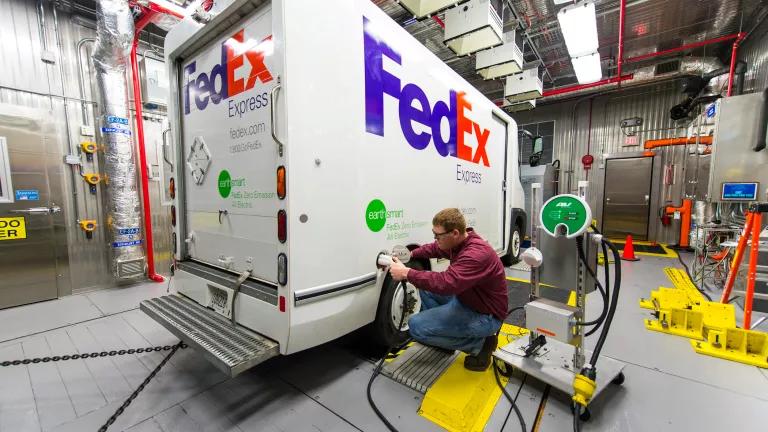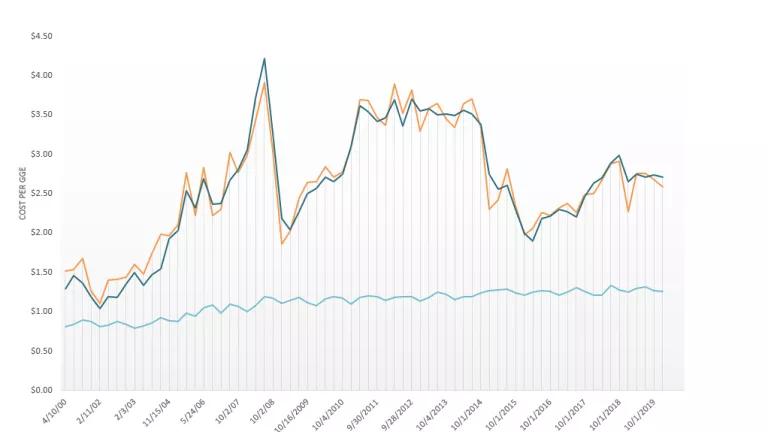Bipartisan Group of States Take Steps to Cut Truck Pollution
Today the top environmental officials from eight states and the District of Columbia—California, Connecticut, Oregon, Maine, Massachusetts, New Jersey, Rhode Island, Vermont—took a bold step towards protecting our nation’s air and cutting carbon emissions from the transportation sector. The states, led by the Northeast States for Coordinated Air Use Management, signed a Statement of Intent to develop a joint agreement and action plan to accelerate the deployment of zero-emission trucks and buses in order to reduce smog-forming pollution, air toxics, and greenhouse gas emissions.
Next Steps
With the statement of intent signed, the next step is for each state’s governor to agree to a Memorandum of Understanding (MOU) to hammer out a strategy to accelerate the zero-emission truck market.
The announcement by states comes on the day the California Air Resource Board (CARB) considers the Advanced Clean Truck Rule, a policy that is likely to be considered by the states as part of an action plan. The rule is the first of its kind in the world and ensures an increasing number of zero-emission trucks are made available for sale. Today’s landmark announcement is also an open invitation for other states to sign-on to the statement of intent and express their desire to transition medium- and heavy-duty vehicles to clean, zero-emission technologies.
As a new expert report released yesterday shows, zero-emission trucks are a triple-win in terms of enabling states to meet air quality and carbon emission reduction goals; allowing truck fleets to achieve the largest savings in terms of total costs of ownership, while increasing state jobs and benefiting the economy.
Advanced Clean Truck Rule
The CARB public meeting today was a positive move in the right direction. After 5-hours of public testimony, the majority of the Board clearly expressed the need for a stronger Advanced Clean Truck Rule. The Board directed CARB staff to restructure the rule before the Board votes on the final version in May 2020.
Several changes, consistent with the advocacy of NRDC and a broad-based coalition, gained traction with the Board. First, the Board directed staff to strengthen the final version of the rule to reach 100% zero-emissions by 2030 or earlier in some truck segments. Second, the Board also discussed the need for staff to develop a timeline beginning with the state and regional air quality requirements and to work backward from those targets in setting the rule's sale requirements. Thus, the rule would better reflect where the state needs to go, rather than just serving as a minimum floor for sales. Through this process, CARB staff would also need to articulate a clear path to reach 100% zero-emission trucks. Last, the Board directed staff to explore ways to prioritize trucks operating in communities hit with the greatest pollution burdens.
The Board’s strong direction to CARB is a positive outcome and we look forward to continue working with CARB to strengthen the rule and articulate a vision for transitioning to 100% zero-emission trucks.
Taking Action to Tackle A Major Public Health Problem
These actions by states come at a time when emissions from trucks are on the rise. Across the country, increasing freight activity is causing more trucks to put more miles on the road. The emissions from diesel-burning vehicles contain high levels of ultrafine particles and over 40 known carcinogens, devastating local air quality. Breathing these toxins, even for a short period, can increase the risk of death. States are stepping up to clean our air and address climate change, in sharp contrast to a federal administration determined to trip over itself in its haste to reverse critical pollution standards.
Diesel exhaust also harms the hardworking Americans that work alongside these trucks, such as railroad employees, truck drivers, and longshoreman. It’s these emissions—filling the lungs of our children, elders, and hardworking Americans—that the eight states and DC are working to address.



